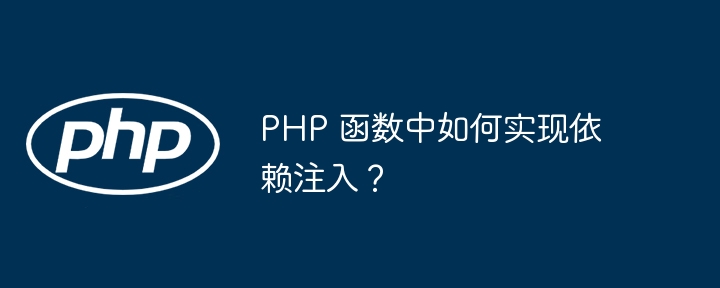
Dependency injection is a design pattern that allows external dependencies to be injected into functions. PHP functions can implement dependency injection by using function parameters, such as passing a PDO instance to inject a database connection. The advantages of dependency injection include testability, maintainability, and scalability.

What is dependency injection?
Dependency injection is a design pattern that allows us to inject external dependencies into functions without creating them directly. This makes the code more modular and testable.
How to implement dependency injection using PHP functions
There are several ways to implement dependency injection in PHP functions. A simple way is to use function parameters:
function greet(string $name, \DateTime $now = null)
{
$now = $now ?? new \DateTime();
// ...
} In this example, $name is a required parameter, while $now is optional. If $now is not provided, it will default to the current date and time.
Practical Case
Let’s look at a practical example:
// 创建一个创建数据库连接的函数
function createDatabaseConnection(\PDO $pdo)
{
// 使用 PDO 实例 $pdo 进行连接
// ...
}
// 在一个控制器中注入数据库连接
function showProducts(string $category, \PDO $databaseConnection)
{
// 使用数据库连接 $databaseConnection 来获取产品数据
// ...
}Through dependency injection, we can use different PDO instances to testshowProducts() function without actually connecting to the database.
Advantages
Using dependency injection has the following advantages:
The above is the detailed content of How to implement dependency injection in PHP functions?. For more information, please follow other related articles on the PHP Chinese website!